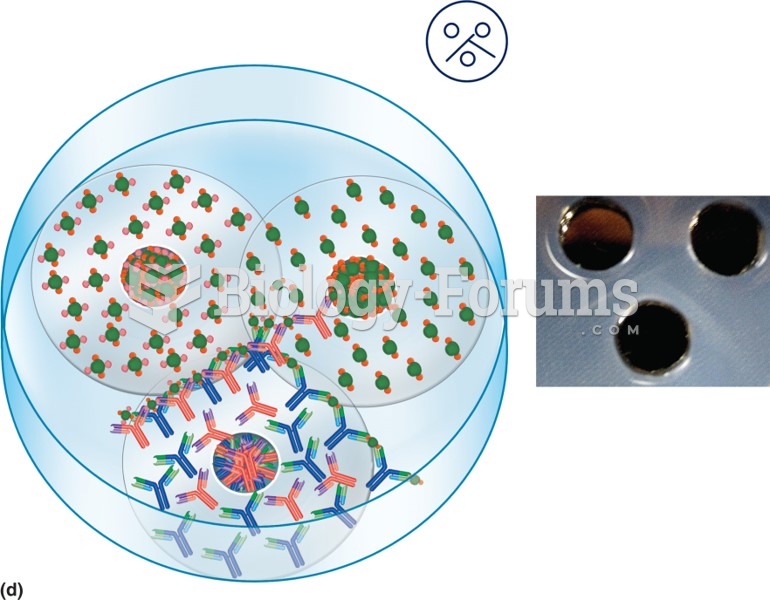|
|
|
HIV testing reach is still limited. An estimated 40% of people with HIV (more than 14 million) remain undiagnosed and do not know their infection status.
Patients who have undergone chemotherapy for the treatment of cancer often complain of a lack of mental focus; memory loss; and a general diminution in abilities such as multitasking, attention span, and general mental agility.
More than one-third of adult Americans are obese. Diseases that kill the largest number of people annually, such as heart disease, cancer, diabetes, stroke, and hypertension, can be attributed to diet.
Though Candida and Aspergillus species are the most common fungal pathogens causing invasive fungal disease in the immunocompromised, infections due to previously uncommon hyaline and dematiaceous filamentous fungi are occurring more often today. Rare fungal infections, once accurately diagnosed, may require surgical debridement, immunotherapy, and newer antifungals used singly or in combination with older antifungals, on a case-by-case basis.
By definition, when a medication is administered intravenously, its bioavailability is 100%.
 Pseudostigmatidae is a family of tropical damselflies, known as helicopter damselflies, giant damsel
Pseudostigmatidae is a family of tropical damselflies, known as helicopter damselflies, giant damsel
 Touch the test light to the negative (–) terminal of the battery or a good engine ground to check ...
Touch the test light to the negative (–) terminal of the battery or a good engine ground to check ...





